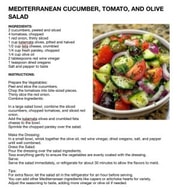Astonishing trick helps Aussies slash bill costs by 20%—are you overspending?
By
- Replies 5
In the ever-evolving landscape of Australian housing, a surprising trend has emerged that's benefiting the environment and significantly reducing household bills for Aussies.
Two innovative construction materials appear to be the unsung heroes behind this cost-of-living victory, which led to a substantial 20 per cent decrease in home heating and cooling requirements.
This revelation comes from a comprehensive survey conducted by our esteemed national science agency, the CSIRO.
The survey examined 233 apartments and detached houses built within the last four years across Melbourne, Sydney, Canberra, Brisbane, and Adelaide.
The findings were nothing short of remarkable.
They showed that these newly-built apartments are 50 per cent more airtight than those tested in 2015.
Michael Ambrose, the CSIRO’s senior experimental scientist, highlighted the fact that heating and cooling efforts consume a significant portion of household energy.
When a home is sealed correctly, it can retain the conditioned air, leading to a noticeable dip in energy bills.
'Making sure when we’re cooling or heating that we retain that conditioned air inside our homes is really important,' Ambrose emphasised.
'And vice versa—it's also important that we don’t have hot air in the middle of summer getting into our buildings.'
Ambrose and his team were initially taken aback by the results of their 'Air Infiltration of New Dwellings in Australia' survey.
However, they attributed some improvement to enhanced building methods and better seals around doors and windows.
The widespread adoption of building wrap—visible as the blue wrapping around new construction sites—really stood out.
‘This was a dramatic improvement in air tightness. But to be absolutely honest, we can only speculate as to why improvement has occurred,’ he said.
‘We think it’s been driven in part by building wrapping — if you look at new construction sites, they all have that blue wrapping around them.’
‘It’s become very common now, but we didn’t see it nine or ten years ago.’
‘It’s mainly meant for waterproofing, but it also acts as an air barrier.’
The second change is found in the lighting choices for modern homes.
LED downlights have replaced the once-popular halogen downlights, which are more energy-efficient and sealed units that don't require ventilation due to excessive heat.
This switch has virtually eliminated air leakage through light fittings.
However, with every silver lining, there's a potential cloud.
The improved airtightness of homes has inadvertently led to a new challenge: the risk of condensation and mould due to inadequate ventilation, which can also increase CO2 levels indoors.
‘They needed lots of ventilation because they got quite hot. But they’ve been replaced by LED downlights.’ Ambrose suggested.
‘These are completely sealed units, and because they don’t get hot, we can put ventilation over them,’
‘We tested individual light fittings and found virtually no leakage through them.’
Though the improvements led to unexpected environmental and financial benefits, they also introduced a new issue that could pose a risk to human health.
‘You may have heard that people in new apartments have complained about condensation problems and getting mould. And a lot of that is due to poor ventilation in these apartments,’ Ambrose continued.
‘When you've got reduced air, you can have Co2 levels increase in there as well.’
A solution to the issue is to install a controlled ventilation system that allows fresh air to enter from outside.
‘We think they’re going to be really important. And something that needs to be in the regulations as well.’ he continued.
‘We don’t want to see holes in our buildings again. We just need controlled ventilation systems in them.’
 Have you noticed any changes in your energy bills due to these new building practices? Are you considering any renovations to make your home more energy-efficient? Share your thoughts and experiences with us in the comments below.
Have you noticed any changes in your energy bills due to these new building practices? Are you considering any renovations to make your home more energy-efficient? Share your thoughts and experiences with us in the comments below.
Two innovative construction materials appear to be the unsung heroes behind this cost-of-living victory, which led to a substantial 20 per cent decrease in home heating and cooling requirements.
This revelation comes from a comprehensive survey conducted by our esteemed national science agency, the CSIRO.
The survey examined 233 apartments and detached houses built within the last four years across Melbourne, Sydney, Canberra, Brisbane, and Adelaide.
The findings were nothing short of remarkable.
They showed that these newly-built apartments are 50 per cent more airtight than those tested in 2015.
Michael Ambrose, the CSIRO’s senior experimental scientist, highlighted the fact that heating and cooling efforts consume a significant portion of household energy.
When a home is sealed correctly, it can retain the conditioned air, leading to a noticeable dip in energy bills.
'Making sure when we’re cooling or heating that we retain that conditioned air inside our homes is really important,' Ambrose emphasised.
'And vice versa—it's also important that we don’t have hot air in the middle of summer getting into our buildings.'
Ambrose and his team were initially taken aback by the results of their 'Air Infiltration of New Dwellings in Australia' survey.
However, they attributed some improvement to enhanced building methods and better seals around doors and windows.
The widespread adoption of building wrap—visible as the blue wrapping around new construction sites—really stood out.
‘This was a dramatic improvement in air tightness. But to be absolutely honest, we can only speculate as to why improvement has occurred,’ he said.
‘We think it’s been driven in part by building wrapping — if you look at new construction sites, they all have that blue wrapping around them.’
‘It’s become very common now, but we didn’t see it nine or ten years ago.’
‘It’s mainly meant for waterproofing, but it also acts as an air barrier.’
The second change is found in the lighting choices for modern homes.
LED downlights have replaced the once-popular halogen downlights, which are more energy-efficient and sealed units that don't require ventilation due to excessive heat.
This switch has virtually eliminated air leakage through light fittings.
However, with every silver lining, there's a potential cloud.
The improved airtightness of homes has inadvertently led to a new challenge: the risk of condensation and mould due to inadequate ventilation, which can also increase CO2 levels indoors.
‘They needed lots of ventilation because they got quite hot. But they’ve been replaced by LED downlights.’ Ambrose suggested.
‘These are completely sealed units, and because they don’t get hot, we can put ventilation over them,’
‘We tested individual light fittings and found virtually no leakage through them.’
Though the improvements led to unexpected environmental and financial benefits, they also introduced a new issue that could pose a risk to human health.
‘You may have heard that people in new apartments have complained about condensation problems and getting mould. And a lot of that is due to poor ventilation in these apartments,’ Ambrose continued.
‘When you've got reduced air, you can have Co2 levels increase in there as well.’
A solution to the issue is to install a controlled ventilation system that allows fresh air to enter from outside.
‘We think they’re going to be really important. And something that needs to be in the regulations as well.’ he continued.
‘We don’t want to see holes in our buildings again. We just need controlled ventilation systems in them.’
Key Takeaways
- Australian homes are becoming more energy-efficient due to new construction materials, leading to a significant reduction in heating and cooling bills.
- Surveys conducted by the CSIRO found new-build apartments are far more airtight than those built four years ago.
- The increased airtightness is attributed partly to the use of building wrapping and the replacement of halogen downlights with sealed LED units.
- While improved home airtightness has environmental and cost benefits, it can lead to increased indoor condensation and mould without adequate ventilation.








